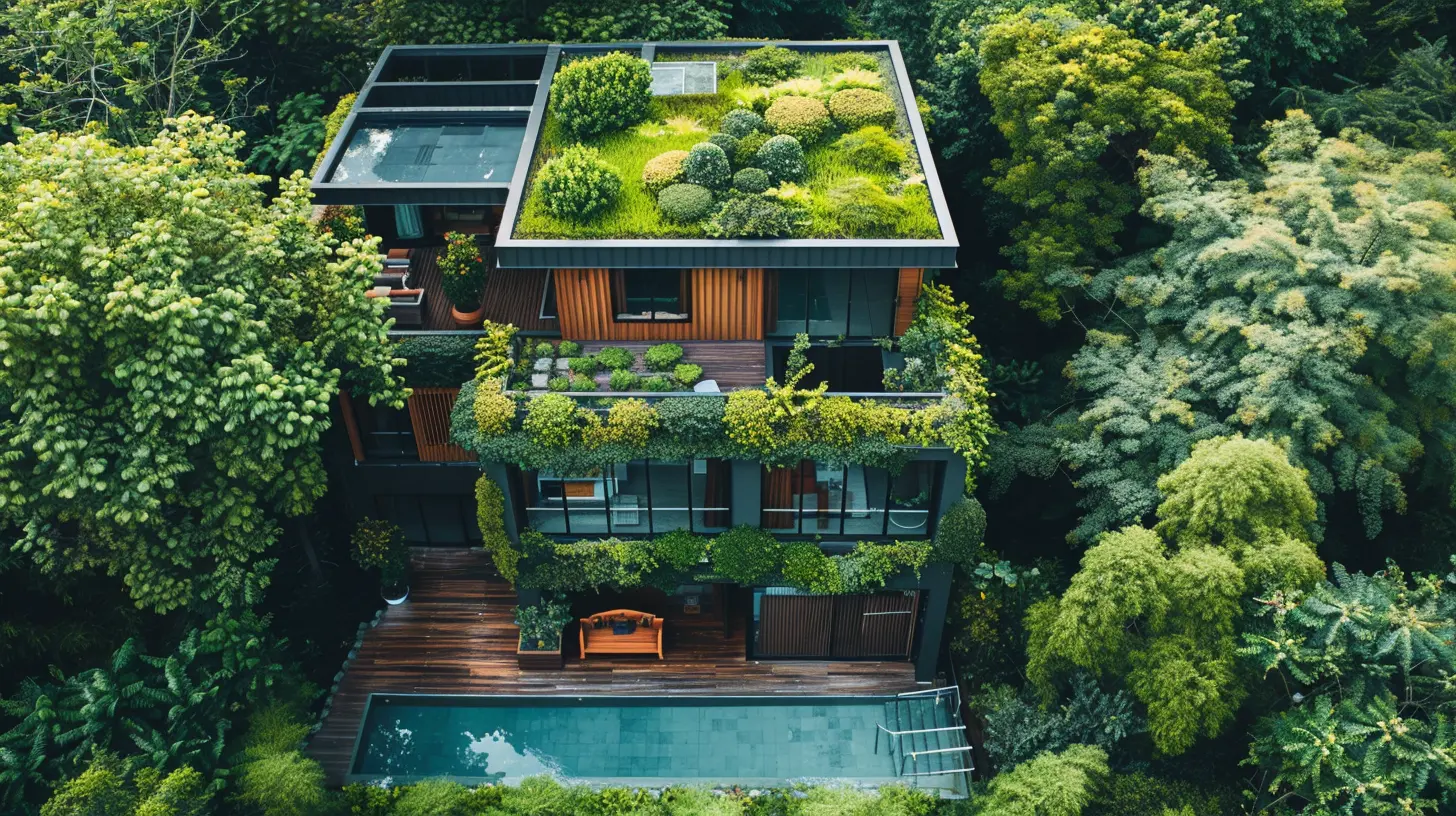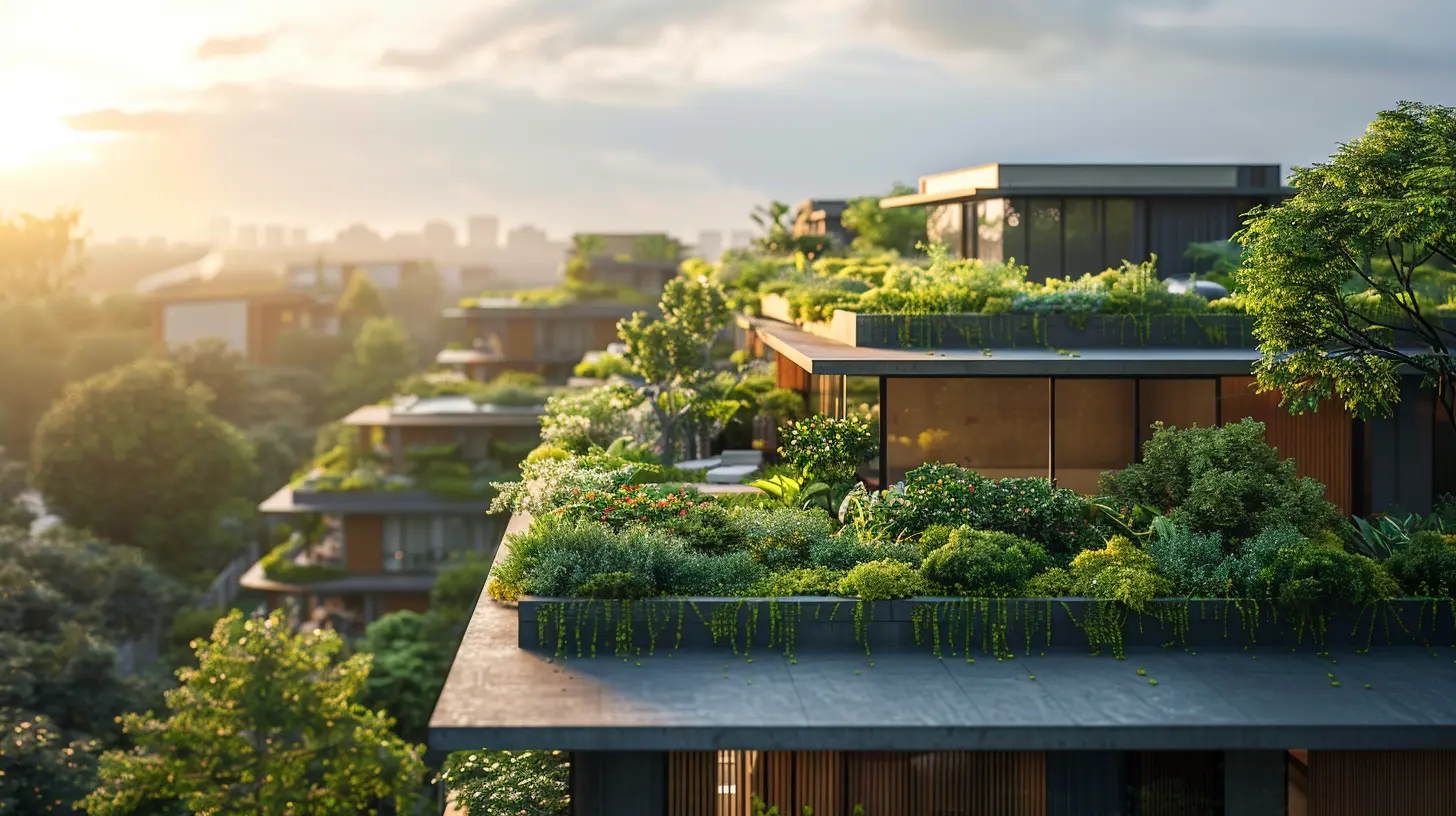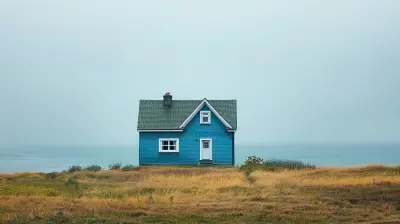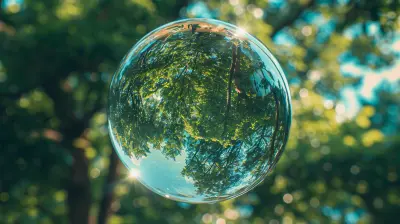The Impact of Sustainable and Green Homes on the Real Estate Market
17 November 2025
Let’s face it—sustainability is no longer just a trendy buzzword. It’s a lifestyle choice, a mantra, and, most importantly, a significant force driving change in the real estate market. You may have noticed that conversations around real estate aren’t just about square footage or whether the house has a pool anymore. Today, buyers are asking questions like, “Is the home energy-efficient?” or “What’s the carbon footprint of this property?”
So, what’s the big deal about sustainable and green homes? And why are they such a game-changer for the real estate market? Well, grab a cup of coffee and let’s dig deeper into why going green is every homebuyer’s favorite tune—and why real estate developers are singing along. 
What Are Sustainable and Green Homes, Anyway?
Before we dive into the juicy stuff, let's clear the air. When we say "sustainable" or "green" homes, we’re talking about properties that are designed, built, and maintained in ways that are kind to Mother Nature. These homes focus on cutting energy consumption, reducing waste, and using eco-friendly materials.Think solar panels, LED lighting, energy-efficient appliances, rainwater harvesting systems, and even roofs covered in lush greenery. It’s like giving your home a high-five for being awesome to the planet. But it’s not just about environmental benefits; sustainable homes also save homeowners money in the long run—talk about a win-win!
The Real Estate Market Is Turning Green—Literally
Okay, so why is the real estate industry hopping on the green train? Because buyers are demanding it. It’s that simple. People are becoming more eco-conscious, and this shift is rippling through every industry, including real estate.Changing Buyer Preferences
Here’s the thing: Millennials and Gen Z are now dominating the home-buying market, and guess what? They care deeply about sustainability. They’re not just looking for a house to live in; they’re searching for homes that align with their values. These generations grew up amidst climate change discussions, so they’re hyper-aware of the importance of eco-friendly living.And let’s not forget about the health aspect. Sustainable homes often boast better air quality (thanks to non-toxic building materials) and lower exposure to allergens. Who wouldn’t want a home that’s good for the planet and their health?
Boost in Property Value
Here’s a fun fact: homes equipped with green features often have higher resale values. Yep, those solar panels and energy-efficient windows aren’t just feel-good investments—they’re also money-makers. Studies show that buyers are willing to pay a premium for sustainable homes because they recognize the savings and lifestyle benefits that come with going green.It’s like buying a high-quality pair of shoes. Sure, you might pay more upfront, but over time, they outlast the cheap ones. The same logic applies to green homes. 
Financial Incentives Sweeten the Deal
Let’s switch gears for a moment and talk about money (because, let’s be honest, it’s always about the money). Governments around the world are offering financial incentives to encourage sustainable living.Tax Breaks and Rebates
In many countries, homeowners can snag tax breaks and rebates for installing energy-efficient systems. Think solar tax credits or rebates for adding energy-efficient heating and cooling systems. These incentives make sustainable homes much more attractive to buyers.Lower Utility Bills
Okay, let’s do some quick math. An energy-efficient home uses fewer resources, which means lower utility bills. Over time, those savings can really add up. It’s like finding a $20 bill in your pocket every month—and who doesn’t love that?Green Mortgages
Here’s a newer trend: green mortgages. Some lenders now offer better interest rates for buyers purchasing sustainable homes. It’s basically the bank saying, “Hey, thanks for helping the planet. Here’s a better deal for you.” These incentives make green homes an even smarter investment.
Builders and Developers Are Rewriting the Rules
Of course, where there's demand, there’s opportunity. Real estate developers aren’t blind to the green trend; in fact, they’re full-on embracing it. More and more builders are incorporating sustainable practices into their designs to meet buyer demands and stay competitive.Switching to Eco-Friendly Materials
Gone are the days of using only traditional materials like concrete and steel. Builders are now opting for renewable resources like bamboo, recycled wood, and sustainable bricks. These materials are not only better for the environment but often more durable.Certifications Seal the Deal
Ever heard of LEED certification? It stands for Leadership in Energy and Environmental Design. Homes with this certification (or similar ones) are basically the VIPs of the real estate world. They’re like having a Michelin star but for houses. Buyers recognize these certifications as stamps of approval for eco-friendliness, which boosts buyer confidence.The Ripple Effect on Urban Planning
Now, let’s zoom out and look at the bigger picture. The rise of green homes isn’t just changing individual properties—it’s reshaping entire neighborhoods and cities.Smart Cities Are the Future
Urban planners are getting creative. They’re building smart cities equipped with green infrastructure like energy-efficient public transport, rooftop gardens, and communal solar farms. These cities are designed to minimize waste while maximizing efficiency. Imagine living in a city that feels like a giant eco-friendly hug. That’s the future we’re heading towards.Improved Community Living
Sustainable developments often come with shared green spaces, bike lanes, and walking paths. These features encourage a stronger sense of community and healthier lifestyles. Plus, who doesn’t love sipping coffee on a balcony that overlooks a lush green park?Challenges in the Journey Toward Sustainability
Alright, let’s keep it real. The road to sustainable real estate isn’t all sunshine and rainbows. There are challenges, too—because nothing good comes easy, right?Upfront Costs
One of the most significant roadblocks? The initial costs. Green building materials and eco-friendly systems can be pricier than their traditional counterparts. While these costs are often offset by long-term savings, not all buyers and builders can afford the upfront investment.Lack of Awareness
Not everyone is clued in on the benefits of sustainable living. Some buyers still prioritize square footage over eco-friendliness, while some builders hesitate to adopt new practices due to perceived risks. But as awareness grows, these challenges are slowly diminishing.What’s Next for Green Homes?
So, where is all of this heading? Well, buckle up because the future looks exciting.Tech Innovations Lead the Way
Technology is playing a massive role in making sustainable homes even more appealing. From smart thermostats that adjust to your preferences to advanced water recycling systems, the possibilities are endless. The more innovation we see, the more sustainable homes will become the new normal.Policy Push
Governments around the world are tightening regulations to combat climate change. This means stricter building codes that require homes to meet higher sustainability standards. In the next decade, green homes might not just be an option—they could become the default.Final Thoughts: Is the Grass Greener on the Sustainable Side?
In a word? Absolutely. Green homes are transforming the real estate market in ways we couldn’t have imagined a few decades ago. They offer buyers healthier living environments, developers new opportunities, and cities a greener future.For those of you wondering whether sustainable homes are worth the hype, remember this: investing in green living isn’t just about saving the planet—it’s about creating a better life for you and future generations. And really, isn’t that what owning a home is all about?
all images in this post were generated using AI tools
Category:
Residential Real EstateAuthor:

Camila King
Discussion
rate this article
1 comments
Hannah Bishop
Sustainable homes boost market value and appeal, attracting environmentally conscious buyers and promoting long-term savings and efficiency.
November 17, 2025 at 6:02 AM


